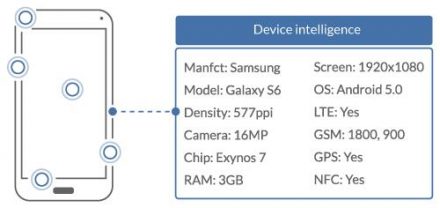Dec. 18, 2017

Online gambling is a thriving industry, and global online wager value is expected to rise to a staggering $950 billion by 2021, a substantial increase from $550 billion last year.
Much of this growth will come from mobile channels, driven by a proliferation of smartphones and tablets; availability of low-cost data plans; and increased access to Wi-Fi―all of which allow consumers to gamble without location restrictions.
The expansion of the industry can also be accredited to more countries legalizing online gambling; a change in attitudes due to the rise of social and sports betting; and increased availability of non-cash payment options such as credit cards and virtual currencies͘. Take for example, the looming Supreme Court decision in 2018 to possibly repeal the Professional and Amateur Sports Protection Act (PASPA) that would put an end to the federal ban on sports betting and infuse the market by 2023 with $6.03 billion in annual revenues.
But, as the gambling market continues to grow, companies need to do more and more to stay ahead of the game. During the next few years, the priority for gambling sites will be to implement up-to-date technology to comply with country-specific jurisdictional requirements; ensure optimum quality across devices; and provide a more localized experience.
So how can companies guarantee jurisdictional control and keep up with consumer demands to ensure fair play for both users and advertisers? In short: IP geolocation technology.
Counter Strike Illegal Gamblers
The omnipresent nature of the internet means players can connect to gambling sites from all over the world͘. While this provides access to a wide audience, it also creates challenges for gambling sites that must ensure they hold a license for each user’s jurisdiction―allowing access to gambling where permitted and restricting where it is not.
As country regulations are tightened, gamblers increasingly attempt to gain illegal access by falsifying their location or hiding behind a proxy server such as a Tor, VPN or hosting center. To combat the issue of illegal betting and protect the integrity of their licenses, many companies are now using IP intelligence to detect suspicious activity.
The technology works by determining the users’ locations right down to a postcode level without them becoming personally identifiable. Additionally, premium IP data providers can accurately determine if users are trying to spoof their locations by masking their access via a proxy, Tor, VPN or routing via a hosting center. Users remain anonymous while gambling companies ensure compliance with data protection laws.
Bring Action to Every Device
With the rapid expansion of mobile betting that gives users “a piece of the action” from an ever-increasing range of devices, gambling sites need to be optimized across all devices and screen types to provide the best possible customer experience. IP intelligence can be used to identify mobile traffic by determining the connection type and speed, allowing the most appropriate content format to be selected for that user.
In addition, this information can be used to determine the type of advertising the user is exposed to while using the site. For instance, a static display ad can be shown to an on-the-go smartphone gambler who is accessing via a slow internet connection, while an interactive video can be shown to a player who is using a tablet and a faster Wi-Fi connection.
Rack Up Points with Localized Content
Determining the locations of users means online gaming sites can automatically display content in their preferred language or currency, without them having to select options from a dropdown menu. Companies will also be able to share relevant information with the player such as local sports results.
In this way, IP geolocation technology helps gambling companies build more meaningful relationships with their customers and yield higher levels of trust, brand loyalty and, ultimately, revenue.
Double Down on Advertising Campaigns
In recent years, both consumers and content providers have spoken out against the annoyance of intrusive, irrelevant ads and the detrimental effect that spamming has on potential online customers. Gambling sites are far more likely to attract and retain players who are served relevant ads, and advertisers will also feel they have hit the jackpot as they watch their click-through rates improve.
Both gambling sites and advertisers can use IP intelligence to raise their game by combining IP data with other criteria to target customers with highly relevant and timely campaigns; share promotions based on user location; and align ads with external events to make the gambling experience even more immersive and meaningful. They can also use location data to deliver personalized messaging that will drive customers into local casinos or betting shops.
In an industry that is governed by country-specific regulations; faces a constant threat of illegal use; and that is evolving to accommodate gambling across a growing number of devices, IP intelligence and geolocation technology is essential. For gambling sites that recognize the need to deliver targeted content and advertising without annoying or identifying the user, making use of good-quality, highly granular, real-time IP data will be the winning hand in the future.






